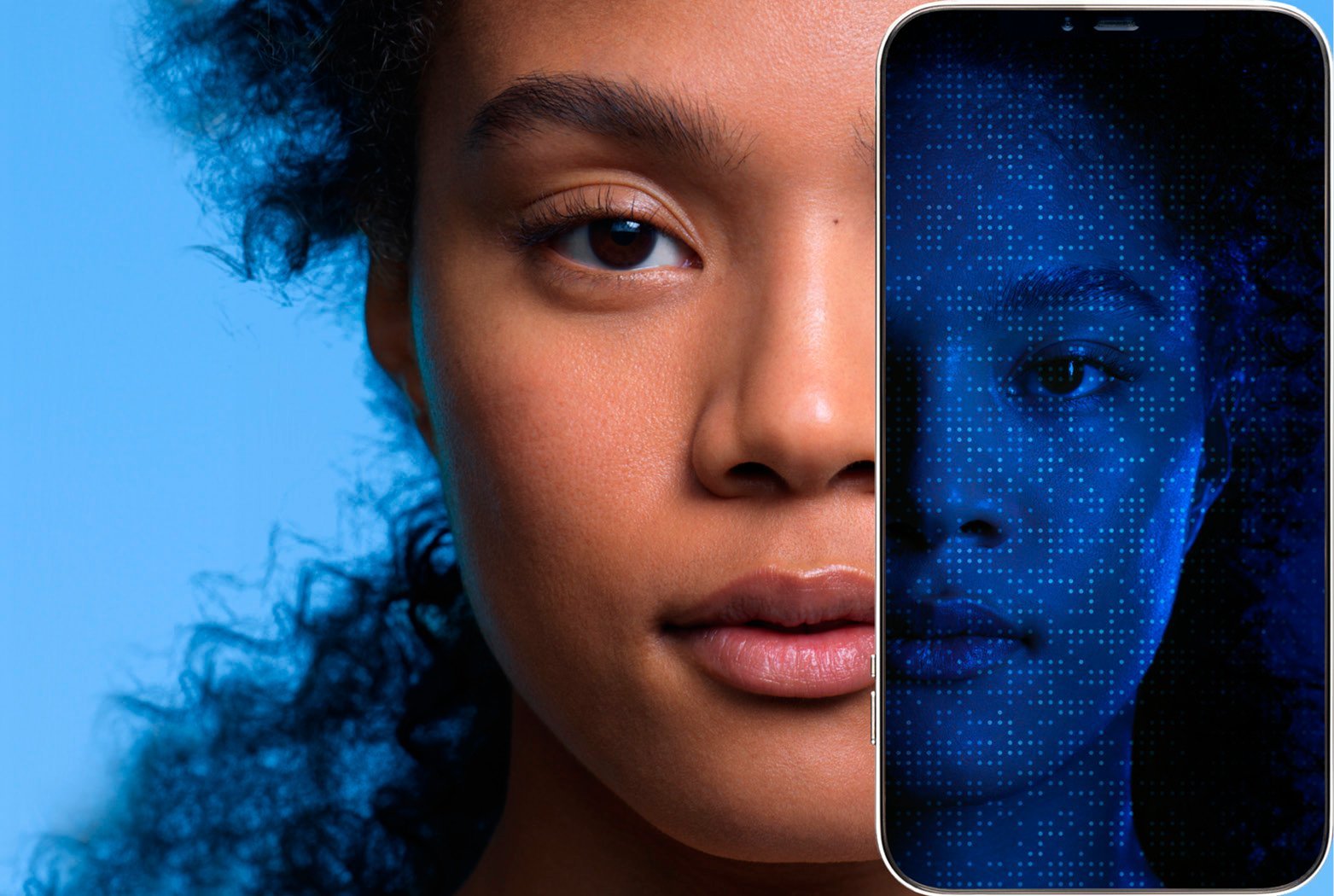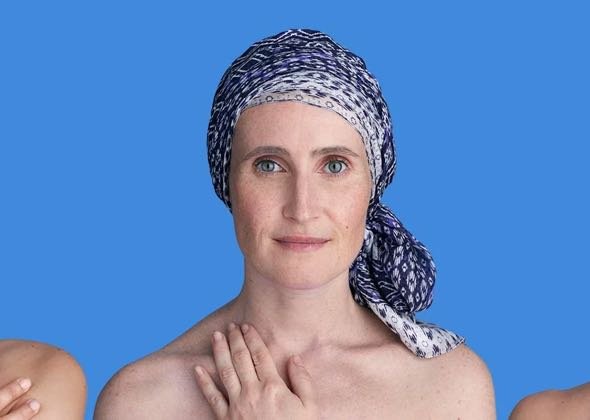UV RAYS:THE MAIN CAUSE OF SKIN CANCER
Sunscreen can prevent skin cancer
Today, the risk of developing skin cancer is 1/1001. Longer holidays, the quest for ever sunnier destinations, outdoor activities and artificial tanning all help explain this increase in the number of skin cancers. This is because sun exposure is the most important cause of skin cancer. Startling statistic: As few as 5 blistering sunburns before the age of 20 can increase the risk of melanoma by 80%. Luckily, with the right protection, sunburn is avoidable. For this reason, it is important to use broad spectrum UVA-UVB sunscreen on a daily basis to prevent skin cancer.
WHAT EXACTLY IS
SKIN CANCER?
Skin cancers fall into 3 main categories:
- Actinic keratosis or solar keratosis: These very common lesions are not skin cancers. They are scaly patches that are rough to the touch and tend to recur on the surface of the skin. They appear following prolonged and repeated sun exposure. They indicate that the skin has lost its natural ability to protect itself against the sun and its UV rays. Some of them can lead to the development of skin cancer. Actinic keratosis can be prevented with lifelong use of sunscreen.
- Basal cell carcinoma: They represent 90% of skin cancers and are mainly caused by frequent and repeated sun exposure during adulthood. Early detection means basal cell carcinomas can be treated since they are slow growing. Since basal cell carcinomas are generally located on the face, late detection can lead to unsightly scarring. Therefore, it is essential that you consult a dermatologist if you have any new lumps, bumps or ulcers on your skin. To prevent this form of skin cancer, use broad-spectrum UVA-UVB sunscreen daily, especially on exposed areas such as the face.
- Melanoma: A malignant form of skin cancer. This is the most dangerous kind of skin cancer because it can put the patient's life at risk. It appears as a result of short intense bursts of sun exposure such as those that cause sunburn. It takes the form of brown or black spots on healthy skin. And in 35% of cases, it concerns a pre-existing mole. If diagnosed during its first stage of development, it can be completely cured with medical treatment. If you discover a suspicious lesion, it is therefore vital that you consult a dermatologist.
Click HERE to learn about the ABCDE method for skin cancer detection.
WHAT DETERMINES
MY RISK OF SKIN CANCER?
Use high protection sunscreen if you fall into any of these categories
Several factors affect your risk of developing skin cancer. If the below factors apply to you, you should be especially zealous about using sunscreen to prevent skin cancer:
- You have fair skin (phototype I or II on the Fitzpatrick scale*), which tans very little and often burns.
- You have freckles or moles that differ in appearance (size, shape, colour).
- You had severe sunburns as a child or were frequently exposed to strong sunlight during childhood and adolescence.
- There is a history of skin cancer in your family.
Click HERE for an overview of the Fitzpatrick scale.
MOLES AND THE SUN:
A BAD COMBINATION
Protect moles with sunscreen to prevent skin cancer
Between childhood and adolescence, sun exposure influences the number of moles that can appear on the skin as well as their size. However, the more moles a person has, the greater their risk of developing a skin cancer, since 35% of skin cancers develop from a pre-existing mole2 . It is therefore essential to effectively protect children and adolescents from the sun to minimise the appearance of new moles. In addition, overexposure of existing moles to the sun influences the development of lesions that may turn out to be cancerous.
The take-home message? Sunscreen use prevents skin cancer: It should be applied generously every 2 hours, especially in childhood and adolescence, but also throughout adult life. If you have a lot of moles on your skin, you should be pay particular attention to sunscreen use to prevent skin cancer.
IS MY MOLE
CANCEROUS?
How to check your moles using the ABCDE method
Dermatologists have created the ABCDE method of mole checking to screen for moles that are potentially cancerous. If any of the following apply to your mole(s), you should see a dermatologist as soon as possible for a professional check.
A: Asymmetry. Is your mole asymmetrical?
B: Border. Does your mole have an irregular border?
C: Colour. Does your mole contain different colours?
D: Diameter. Is your mole greater than 6 mm in diameter?
E: Evolution. Is your mole changing?
SKIN CANCER:
EARLY DETECTION IS PARAMOUNT
If detected early, 90% of skin cancers are curable. That is why screening is so important. If you notice a new mole, or a mole that is changing in appearance, or if you have never had a full body mole check, we strongly recommend seeing a dermatologist. Remember, the earlier skin cancer is diagnosed, the greater the chances of successful treatment. Between dermatologist visits, use [SAVE YOUR SKIN LANDING PAGE] to keep an eye on your moles and those of your loved ones. And of course, make sunscreen a daily non-negotiable to protect your moles and prevent skin cancer.
SUNSCREEN IN CHILDHOOD
PREVENTS MELANOMA IN LATER LIFE
Dermatologists agree that the critical window for skin cancer prevention is age 0-20. 86% of melanomas are attributed to overexposure to UVA and UVB rays and 80% of skin damage caused by the sun occurs before the age of 18. That’s why sun-safe behaviour in childhood and adolescence is essential for safeguarding future health, even decades down the line. For this reason, it is important to educate children on smart behaviours from the youngest age, to make them autonomous in protecting their skin. The basics:
- Seek shade between 11 am and 3 pm when the sun is at its strongest.
- Wear protective clothing such as a hat, sunglasses, long-sleeved shirts, etc.
- Generously apply very high protection UVA-UVB sunscreen every 2 hours, or after swimming, towelling off or sweating.
For in-depth information on how to protect kids from the sun, click HERE.
Worried about rumours you’ve heard about the safety of sunscreen? Jump to HERE.
WHICH SUNSCREEN SHOULD I USE
TO PREVENT SKIN CANCER?
At La Roche Posay, we’re committed to helping you do everything you can to prevent skin cancer. This includes providing you with the most advanced sun protection technology available on the market: Anthelios.
Anthelios sunscreen, to fight skin cancer
Recommended by 25,000 dermatologists worldwide, the Anthelios range of high-SPF, broad-spectrum sunscreens feature our patented XL Protect technology, the result of painstaking research and extensive clinical documentation.
Anthelios provides optimal protection from UVA and UVB rays and comes in a variety of textures to suit different situations. Designed to comfort and protect even the most sensitive skin types, it is available in a fast-absorbing tinted cream, an ultra-light fluid, a gel-cream for oily skin, a moisturizing milk and a gentle formula designed especially for children. Make sunscreen part of your daily routine and check your moles on a regular basis to maximise your chances of remaining cancer-free.
CAN SUNSCREEN
CAUSE CANCER?
Is sunscreen safe?
The safety of sunscreen is currently the subject of much debate online. Recent claims have even suggested that sunscreen may actually cause cancer. But if we look at the scientific evidence available, such claims are totally unfounded.
Fact: No data published to date shows any adverse health effects in humans due to the regular use of sunscreen4. The safety of sunscreens has been investigated in laboratories and on live subjects for many, many years. The results of these studies offer compelling evidence that sunscreens are both safe and effective.
Can sunscreen cause skin cancer?
A number of scientific studies have disproved claims that sunscreen can cause melanoma. Comprehensive assessments of thousands of people have categorically shown that sunscreen use does not increase a person’s chances of developing melanoma.5,6
Fact: The sun causes skin cancer. We know for sure that sun - or UV radiation - causes skin cancer and sunscreen protects against melanoma. In the case of melanoma, 86% of cases are put down to overexposure to the sun’s rays. The Journal of Clinical Oncology published a 2011 clinical study on over 1,600 people demonstrating that the regular use of sunscreen reduced the incidence of melanoma by 50-73%.
Fact: Protecting your skin daily and checking your moles regularly will help minimise your risk of skin cancer.
Check out [SAVE YOUR SKIN] to help you. The site contains lots of clear, informative and interactive tools to show you how to check your and your family’s skin and detect any suspect lesions as early as possible.
1American Association for Cancer Research Press Release, May 29, 2014 http://www.aacr.org/Newsroom/Pages/News-Release-Detail.aspx?ItemID=553#.WKyFqxLhAvo
2The Syndicat National des Dermatologues-Vénérologues (National Union of Dermatologists-Venereologists).
3Parkin DM, Mesher D, Sasieni P. Cancers attributable to solar (ultraviolet) radiation exposure in the UK in 2010. Br J Cancer 2011; 105:S66-S69.
4Burnett, ME & Wang, SQ. Current sunscreen controversies: A critical review. Photodermatology, Photoimmunology & Photomedicine. 2010. 27, 58–67.
5Huncharek M, Kupelnick B. Use of topical sunscreens and the risk of malignant melanoma: a meta-analysis of 9067 patients from 11 case-control studies. Am J Public Health 2002; 92:1173-1177.
6Dennis LK, Beane Freeman LE, VanBeek MJ. Sunscreen use and the risk for melanoma: a quantitative review. Ann Intern Med 2003; 139:966-978.




